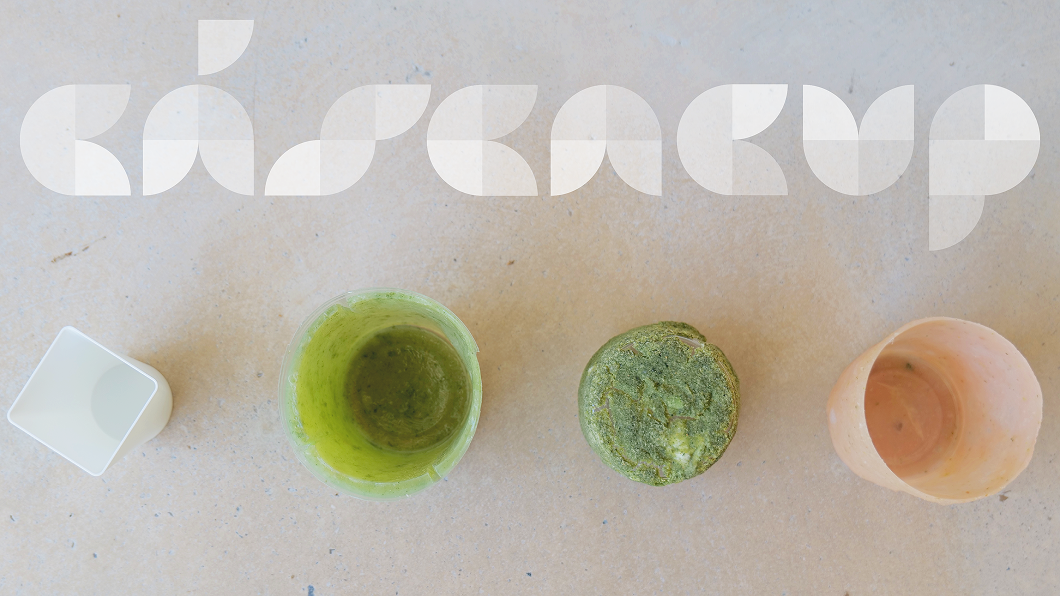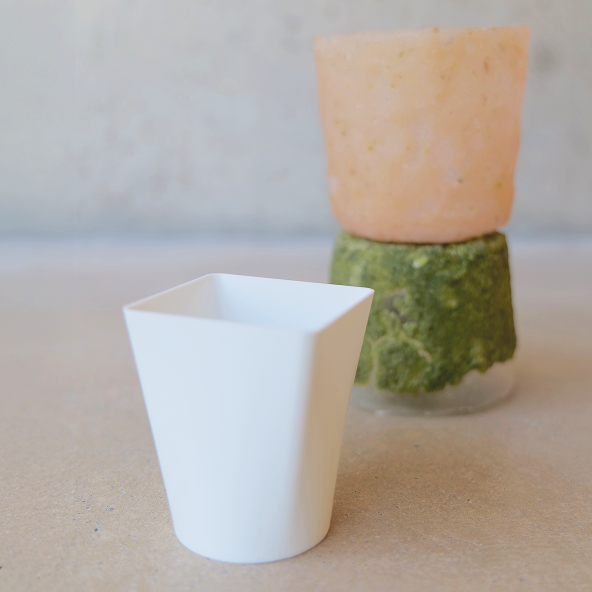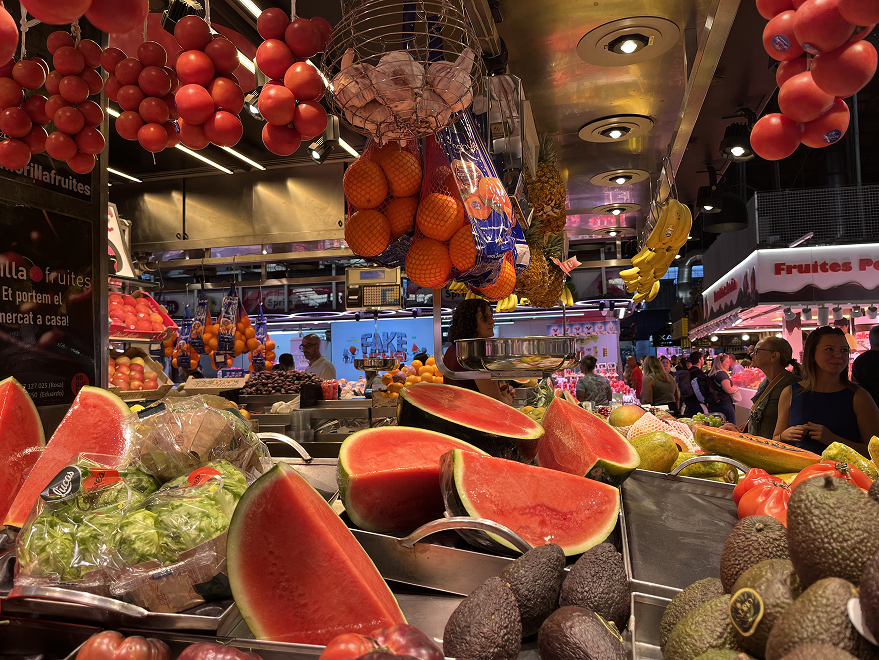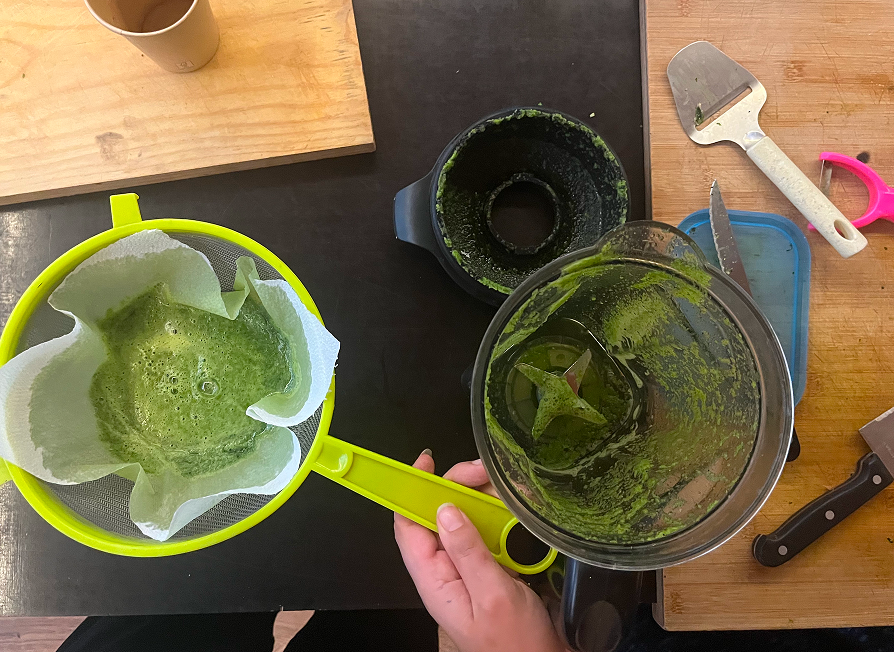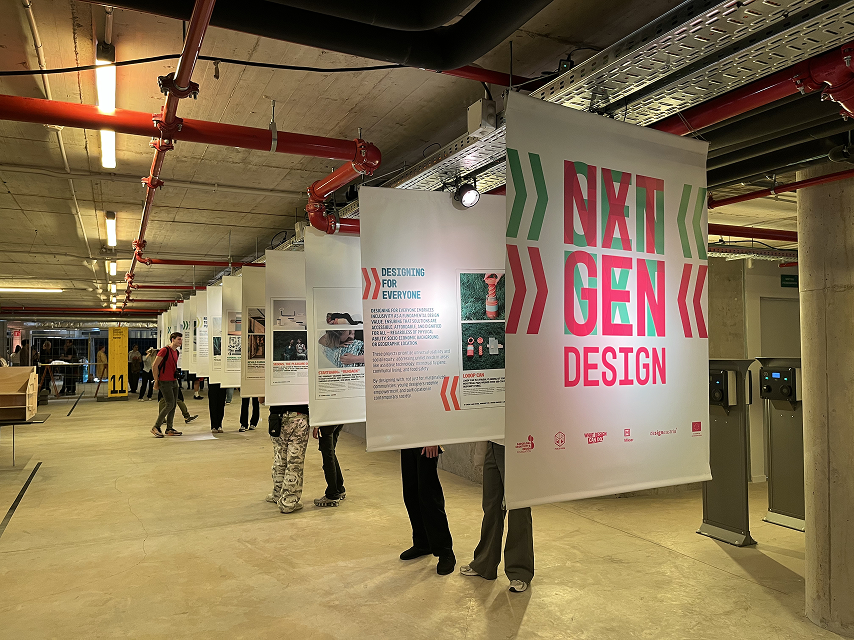CaSCACUP
CONCEPT
AN EDIBLE CUP THAT REIMAGINES FOOD WASTE, REPLACES PLASTIC, AND TURNS SUSTAINABILITY INTO A SENSORIAL EXPERIENCE.
into edible, zero-waste containers. By separating the organic waste parts of the melon and creating a new material out of it, we shape the waste into sturdy cups. The project replaces over 70,000 daily plastic fruit cups (Barcelona) with an upcycled, sensory alternative. Each cup is made from layers of the melon itself: the green bottom provides structure, the white container becomes part of the dish, so you can eat your cup.
The project embodies circularity and resource efficiency by reducing waste, and creating an interactive “eat your cup” experience. Cascacups connect environmental awareness with pleasure, makes local market systems more sustainable, and invites to experience circularity through taste.
At its core, Cascacup is a design-driven research project that merges material curiosity with sustainability. The process highlights how food waste can evolve into a design material through circular thinking.
TEAM
circular design, applied arts
Carolien Roosmarijn Weerstand (born 2000, Leidschendam, the Netherlands) is a circular designer and applied artist with a passion for circular, waste-based, and bio-based design. She founded Studio Weerstand, which is based in Eindhoven (Netherlands). With studio Weerstand, she breathes new life into what others consider “worthless.”
The design process starts with a form of waste. During the experimental design process, Carolien often let her senses take –the lead: what do you see, feel, taste, smell? Through open experimentation she creates new appliences for a material that was previously seen as waste.
Her creations range from usable materials and products to sculptures and installations. With her work, Carolien reveals the value of the worthless and demonstrates that waste doesn’t have to be waste.
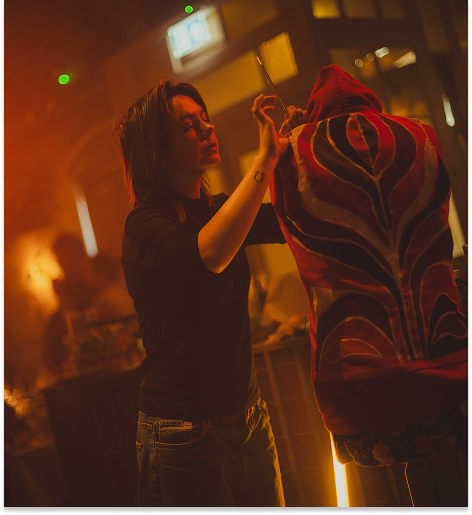
Design is a way to ask questions, communicate and create change. My ambition is to explore materials to develop processes and concepts and ideas that challenge perspectives and inspire new ways of thinking.
Nele Oetjens studies product and process design at the University of the Arts (UdK) Berlin. Her work moves between product and concept design, driven by curiosity for unconventional ideas and approaches. Through her studies at UdK Berlin and OCAD University Toronto, she has gained experience in material experimentation, circular design, and storytelling.
She has worked in design studios (Studio Berg, Studio Mark Braun), focusing on product development and design processes. Her projects have been shown at exhibitions like Designblok Prague, Berlin Design Week and Saarlandmuseum. Additionally, she has worked in production design and art fabrication, including assisting with Ai Weiwei’s artworks. Nele is interested in design that not only looks good but also communicates ideas and challenges perspectives.
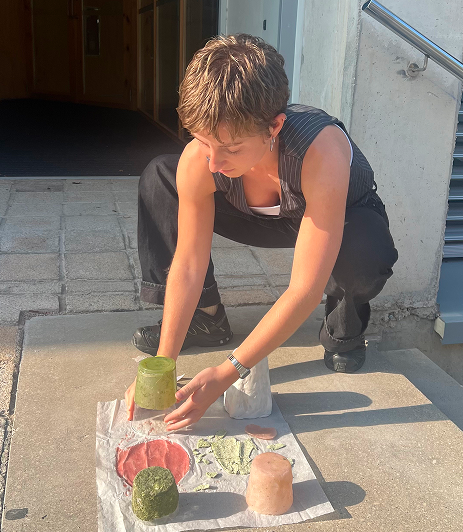
Graphic designer, illustrator
Szonja Somogyvári (born 2003, Hungary) is a graphic designer and illustrator exploring the intersections of biodesign, experimental design, and visual storytelling. Her practice thrives on collaboration and collective creation, where design becomes a space for dialogue and shared curiosity.
Driven by the desire to connect people through art, she creates works that challenge perception and reveal alternative ways of seeing the world. Her projects often emerge from experimentation — where materials, media, and ideas evolve together — blurring the lines between graphic design, moving image, and ecological thinking.
Through her practice, Szonja aims to inspire reflection on the relationship between humans, nature, and the designed environment, using creativity as a tool for social and environmental awareness.
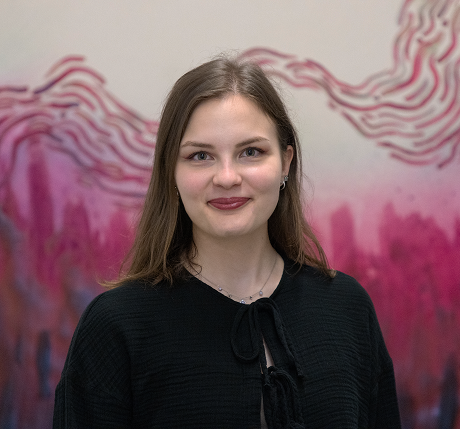
PROCESS
Problem Need
Every day, Barcelona’s markets generate tons of fruit waste and thousands of single-use plastic cups for pre-cut fruit. Approximately 39 public markets collectively use more than 70,000 plastic cups per day, while the melon rinds and skins are discarded. This linear system: harvest, consume, discard, creates a lot of unnecessary waste.
Càscacup proposes an edible, upcycled alternative: transforming dehydrated watermelon rinds and skins into functional, fully edible containers. The project reimagines waste as a resource, merging sustainability, material experimentation, and gastronomy into one low-waste experience. Each cup is made from a bioplastic made from the rinds and skins of the watermelon. By using the discarded material directly to create a substitute for the wasteful plastic cups, we managed to reshape the linear economy into a circular one.
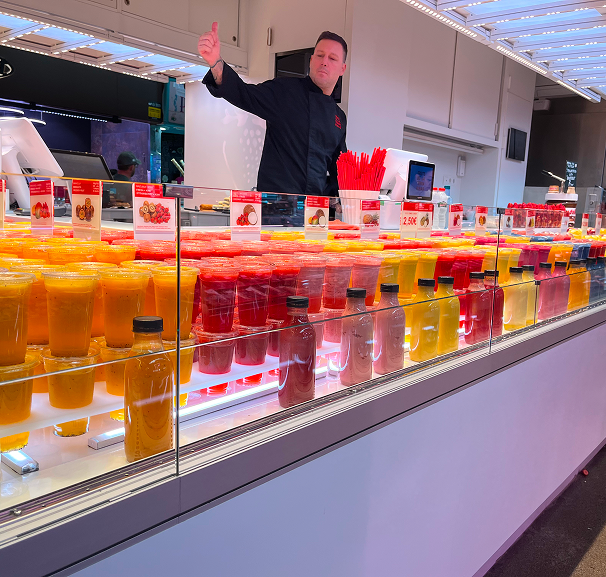
Enviromental Impact
Càscacup reduces both plastic waste and food waste by repurposing melon peels into edible containers. During production we use low-energy dehydration methods and small scale bioplastic production.
with Càscacup, we create a new material cycle for something which was previously seen as waste. By implementing this new use, all parts of the melon are used, nothing goes to waste anymore.
The concept for Càscacup sprouted from experiencing and observing the local markets. by collaborating with local market vendor, we want to promote circular practices within the existing food (market) culture of Barcelona. Càscacup raises awareness about everyday waste through a playful product that vendors and consumers can easily adopt.
Càscacup offers an interactive, sensory experience where eating and sustainability merge. The cup’s taste, texture, and story enhance the dining moment, turning eco-awareness into enjoyment.

Materials, Method and Technical Process :
The development of Càscacup involved extensive material exploration to understand and refine the natural properties of the different parts of a watermelon (skin, rind, flesh). Through a series of experiments with heating, shaping, drying and coating, the team tested how the peel and rind could become both structurally stable and sensorially engaging. Parallel bioplastic-inspired experiments revealed a wide range of promising compositions and treatments that can enhance waterproofness and strength. These ongoing studies open up exciting possibilities for future refinements in texture, durability, and functionality.
At its core, Càscacup is a design-driven research project that merges material curiosity with sustainability. The process highlights how food waste can evolve into a design material through circular thinking
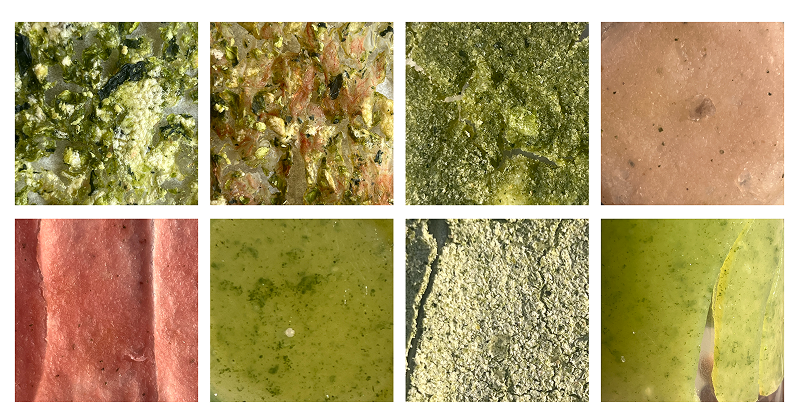
EXPERIENCE
Turning Waste into Innovation: Our Cascacup Journey
During the NXT GEN Design Residency in Barcelona, Szonja, Carolien, and Nele collaborated intensively to develop Càscacup, an edible, zero-waste cup made from watermelon rinds and skins discarded at local markets. Starting with brainstorming at Akasha Hub, the team quickly converged on the concept, balancing feasibility, lack of equipment, and time constraints. Hands-on prototyping in Xavi’s kitchen and at Akasha allowed them to explore drying, shaping, and coating techniques, testing structural stability and sensory qualities. Visits to IAAC and FABLAB inspired material experimentation and alternative fabrication approaches. Throughout the process, the group iterated constantly, adapting the concept from decorative bowls to functional cups that replace single-use plastic. The final day focused on refining the prototype, preparing visuals, and presenting the project, linking material research with sustainability, circularity, and user experience. The residency highlighted teamwork, rapid iteration, and design-driven experimentation, creating a rewarding and memorable collaborative experience.


